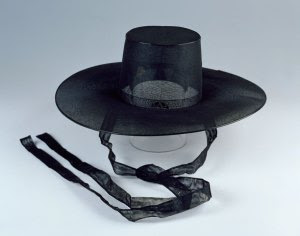Man's Hanbok
Hanbok men, waist size along there even longer. Just as jeogori for women, to find connections between the right and left, tied with a ribbon in front of the chest. Differences hanbok women and men is a way of inference ribbon.
Parts of the traditional hanbok man
- Durumagi
Outer clothing used at certain times. Used after Sokgui. Durumagi used to warm during the winter and worn over regular clothes.
- Gat-Jeogori
The shape is slightly larger compared with jeogori. The difference is only on the inside of this type of clothing is made of rabbit fur, so keep the wearer warm. Materials outside usually made of silk.
- Changot
In the Joseon era used by the noble class or prang respected. Another variant is a hanbok hanbok other than what we usually see.
- Hakjangui
Judge means learning or knowledge. hakja mean scientists or scholars. hanbok of this type used by the scholar during the Koryo until the Jeoseon. Judging from the line of his pieces, meaning the daily low and too virtuous noble character.
- Shimui
Hanbok is worn scholars / scientists when in wajtu free or at rest. Shim (심) means contemplation. Therefore, scientists are usually in their spare time they like ponder something, these clothes later called such that. The clothes these scientists, judging from its shape, more suitable subject for study passive rather than active. Like painting or philosophy.
- T'eol Magoja
This outfit is actually more toward the clothing of Manchuria. First introduced by a politician Korea at the time of Jeoseon assigned in the area of Manchuria, and go back to Korea by using this type of clothing. These clothes inside coated with fur. As well as a symbol of luxury.
- Baji
Pants are used by man.
- Gat
Gat is a kind of Korean traditional hat worn by men at the time went out of the house or attend important events. Gat has a vast and wide suburb called yangtae, and the middle tubular high. Fasteners gat is rope tied in the bottom of the chin. People gat Korea has imposed since the Three Kingdoms Period (37 BC-668 AD) to protect the head from the sun and rain. In mid Jeoseon Dynasty (16-17 centuries), gat worn as a symbol of social status by the nobility and scientists and an important part of everyday clothing. Gat is seen as a means of distinguishing their nobles with uncultured.
- Jipsin
Jipsin (짚신) is a type of traditional Korean shoes made of straw. The term jipsin also given to traditional shoes made from fabric and flax. Shoes jipsin thought to have been worn by Koreans since the time of the Three Kingdoms (37 BC-668- M). In some ancient paintings, often depicted a wanderer traveling straw shoes hanging on the back. In the Jeoseon Dynasty (1397-1910) most people make jipsin as their footwear daily. Because at that time, the Korean people mostly work in agriculture, straw materials to make jipsin can easily be found. Usually they make jipsin in winter, when it is not down to the fields for planting.
의류 "한복 남성"한국 - Costum "Man's Hanbok" South Korea
4/
5
Oleh
Unknown























1 komentar:
The hanbok clothing is a beautiful and traditional Korean clothing. It is made with high quality materials and it is very comfortable to wear. I love wearing hanboks!
Reply